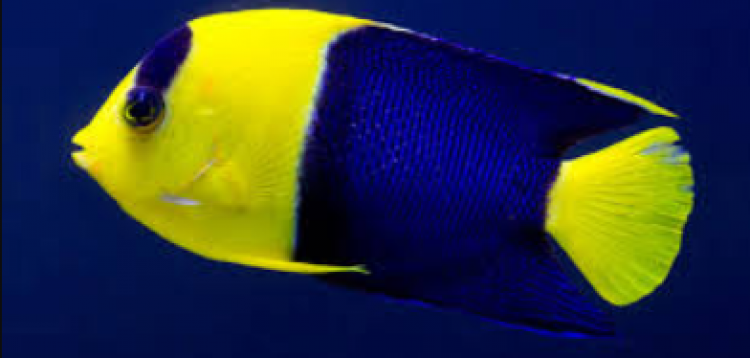- Name:
Pygmy Angelfish
(View AKA's) - Family: Pomacanthidae
- Species: Angel Dwarf
- Scientific Name: Centropyge argi


More Details
General info about Pygmy Angelfish
The Pygmy Angelfish it is a brilliant sapphire-blue with orange highlights to the face. The Pygmy Angelfish should have numerous hiding places and live rock for grazing on microalgae. It may nip at large-polyped stony corals and clam mantles. The Pygmy Angelfish is an aggressive little angelfish, so it is best to never have more than one male per tank, since they may fight to the death. A breeding pair may be kept.
Pygmy Angelfish Diet & Nutrition
Pygmy angelfish is an omnivorous marine angelfish feeding on a variety of marine algae. This species can readily feed on frozen and prepared foods in an aquarium. Diet must consist of varied food items such as frozen mysis shrimp, spirulina, nori and detritus in the aquaria. Feeding must be done frequently if no natural sources are available in the tank.
Determining Sex of Pygmy Angelfish
Color does not determine the sex of Pygmy angelfish, like other Centropyge, this species are born females. The larger and more dominant fish will become male and the others will remain female. If the male dies, the next in command in the hierarchy will turn to male.
Breeding & Spawning Pygmy Angelfish
Species belonging to the genus Centropyge are broadcast spawners, relasing eggs and sperm simultaneously at dusk by rising into the water column and relasing the gametes at the top of the aquaria. A tall tank with proper lighting schedule which mimics the species natural environment is needed to encourage spawning in an aquarium setting. The eggs hatch in just under a day. After hatching, within 2 to 3 days, they need microscopic algae for their very small mouths.
Common Diseases with Pygmy Angelfish
Dwarf angelfishes such as the Pygmy angelfishes are susceptible to diseases such as White Spot Disease, Velvet Disease, and bacterial infections when tank conditions are not kept at an opmtimum range. Parasites may cause scratching and flashing behavior of the affected fish which usually culminates to numerous white dots on the skin (White Spot Disease) or a peppery coating leaving a yellow to light brown "dust" on body (Velvet Disease). A secondary infection from these parasites may lead to bacterial infections which can kill the fish within days.
Pygmy Angelfish Origin
The Pygmy angelfish are native to the waters of the Caribbean and Gulf of Mexico, north to North Carolina.
Caution with Pygmy Angelfish
This species prefer reef tanks over fish only tanks but caution is recommended when adding this fish to a coral tank since they are observed to be nipping on sessile invertebrates such as corals and clam mantle.
It is also quite aggressive and should not be housed with other Angelfish unless they are bonded pairs. It is observed that male saengelfish when kept together will fight to the death.
Acclimating Pygmy Angelfish
This pygmy angel should be provided with plenty of rubble type areas to pick natural foods from and with several little caves in the rock work to hide in to feel secure. These species favor an established reef environment with plenty of nooks and crannies to graze for food.
Relevent Articles
Original Detail
| Name | Species | Family | Scientific Name | More Detail | Added by |
|---|---|---|---|---|---|
| Pygmy Angelfish | Angel Dwarf | Pomacanthidae | Centropyge argi | The Pygmy Angelfish it is a brilliant sapphire-blue with orange highlights to the face. The Pygmy Angelfish should have numerous hiding places and live rock for grazing on microalgae. It may nip at large-polyped stony corals and clam mantles. The Pygmy Angelfish is an aggressive little angelfish, so it is best to never have more than one male per tank, since they may fight to the death. A breeding pair may be kept. | PalaciosAn |
Changed by users
| Submitted Date | Submitted By | Status | Action |
|---|




